Difficult Terrain ( Hilly, mountainous roads)
Driving a vehicle in a hilly road can be challenging, particularly if the gradient is very steep. Like other complex driving conditions, you have to follow some specific precautions and rules to drive safely in such terrains. Some guidelines are provided in the following sub-sections.
Guidelines to drive in difficult Terrain
-
Starting a vehicle: Irrespective of whether you are going downhill or uphill, starting a vehicle in difficult terrain is not the same as starting at grade or level terrain. While going downhill, the vehicle starts rolling down as soon as you release the hand brakes. When you are going upgrade, i.e. the vehicle starts rolling back. While it is easier to control the vehicle while going down, it is far more difficult to manoeuvre the vehicle when you are rolling back. While going uphill, starting a vehicle from stop position is a bit tricky, and lots of drivers fail in this situation. The vehicle should not roll back at all while starting. You need to follow the steps given below to start a vehicle facing uphill smoothly.
- You should pull the handbrake, press and hold the release button, so that the handbrake is still engaged.
- Then release the clutch gently, while pushing the accelerator enough, till the vehicle starts to move forward steadily (Ensuring that the vehicle does not roll back anymore).
- While giving the required acceleration by progressively releasing the clutch, gently start releasing the handbrake. If for some reason, the vehicle starts to roll back, immediately press the brake and pull the handbrake. Repeat the earlier procedure again.
- To get to 2nd gear or higher gears on upgrade, you will need more acceleration compared to acceleration required on flat grounds.
- While going down in a steep grade, it is always advisable to drive in low gear and use brakes whenever required.
- Remember, your handbrake must always be in smooth working condition. You should initially practice on relatively flatter slopes before making your way towards steeper slopes.
-
Right of Way for uphill vehicles: While driving on hilly areas you should always give way to vehicles travelling uphill.
-
Taking turns: Given below are a few turning manoeuvres which you will encounter while driving on hilly roads. Additionally, guidelines to be followed while driving on such locations are discussed below.
-
Easy turns: These turns are easy to manoeuvre, with proper sight distance. You need to maintain your lane and drive slowly.
Figure: An example for easy turn on the hill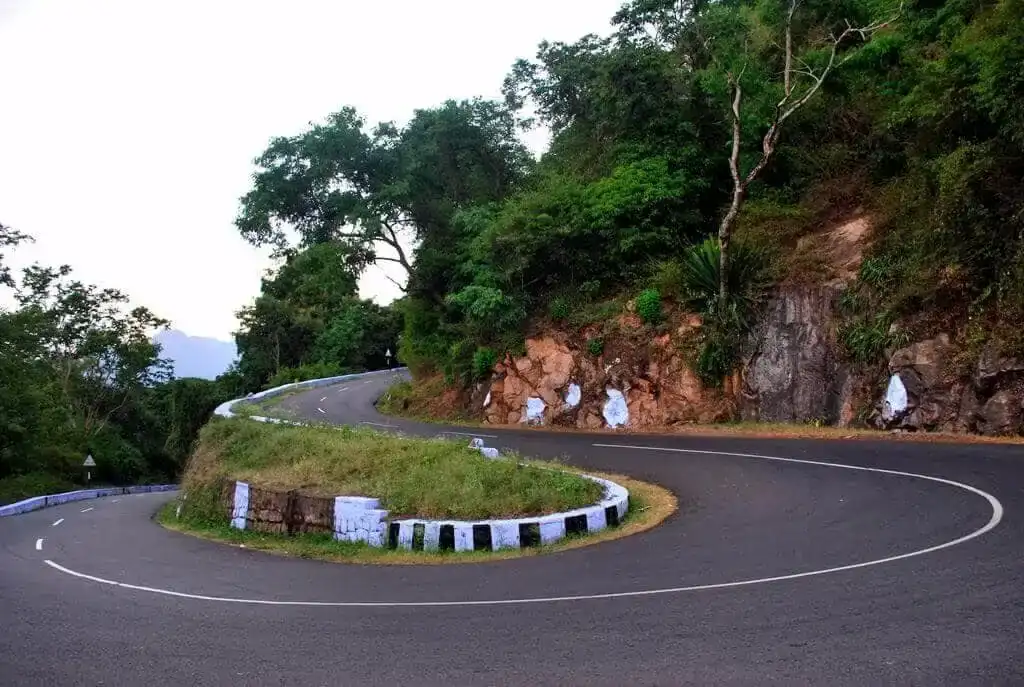
-
Blind turns: You should honk at every blind turn (unless prohibited) to alarm the oncoming driver. Always stay in your lane since you cannot see what is coming around the corner. Always drive expecting an oncoming vehicle.
Figure: Typical blind turn on hill roads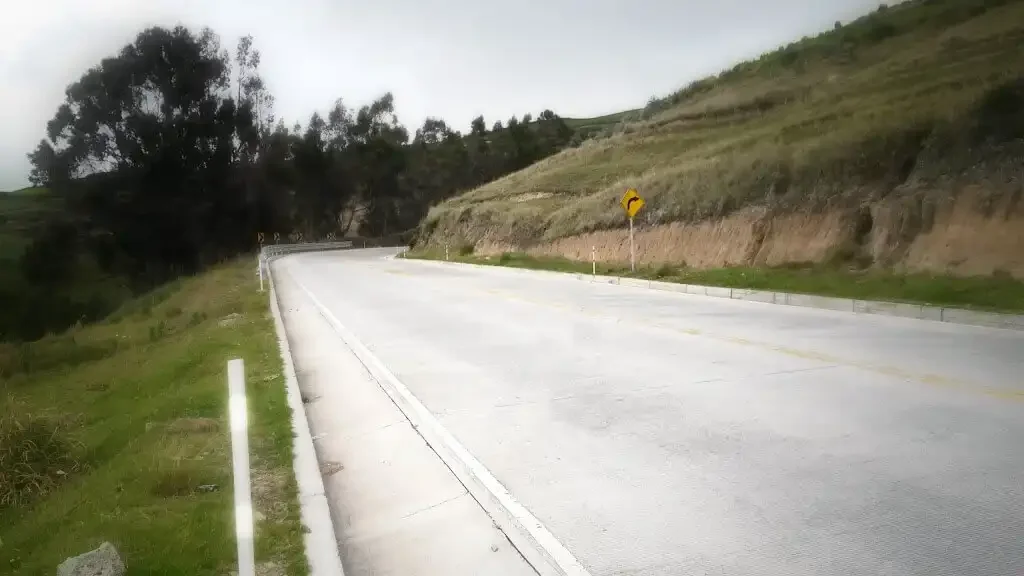
-
Acute turns: You should drive with low gear and medium speed while negotiating a sharp bend. While driving on an upgrade, you need to accelerate immediately after the bend. Also, you may switch off AC to get more power.
Figure: An example for acute turn but not a blind turn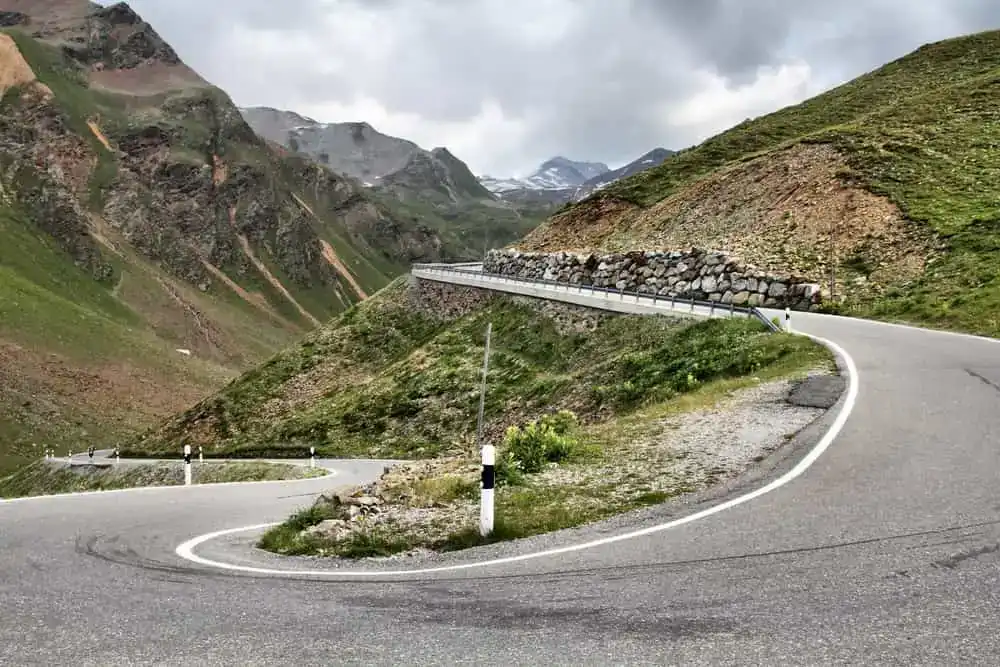
-
Acute, blind, and steep turn: To manoeuvre such a turn, stay in your lane all along. Though it is extremely difficult to turn left while going uphill, you should shift to low gears, if required, to keep you vehicle in the same lane. However, for heavy vehicles, it is not easy to stay in the same lane. As a driver of heavy vehicle, you should honk ahead of turning so that the oncoming vehicles are warned and can stop at a suitable distance to allow your vehicle to turn safely. In slip zones where honking is prohibited, you should look out for convex mirror at the turning and carefully manoeuvre the turn at a lower speed. During the night time, use headlights to warn the oncoming vehicles.
Figure: An example for acute, blind and steep turn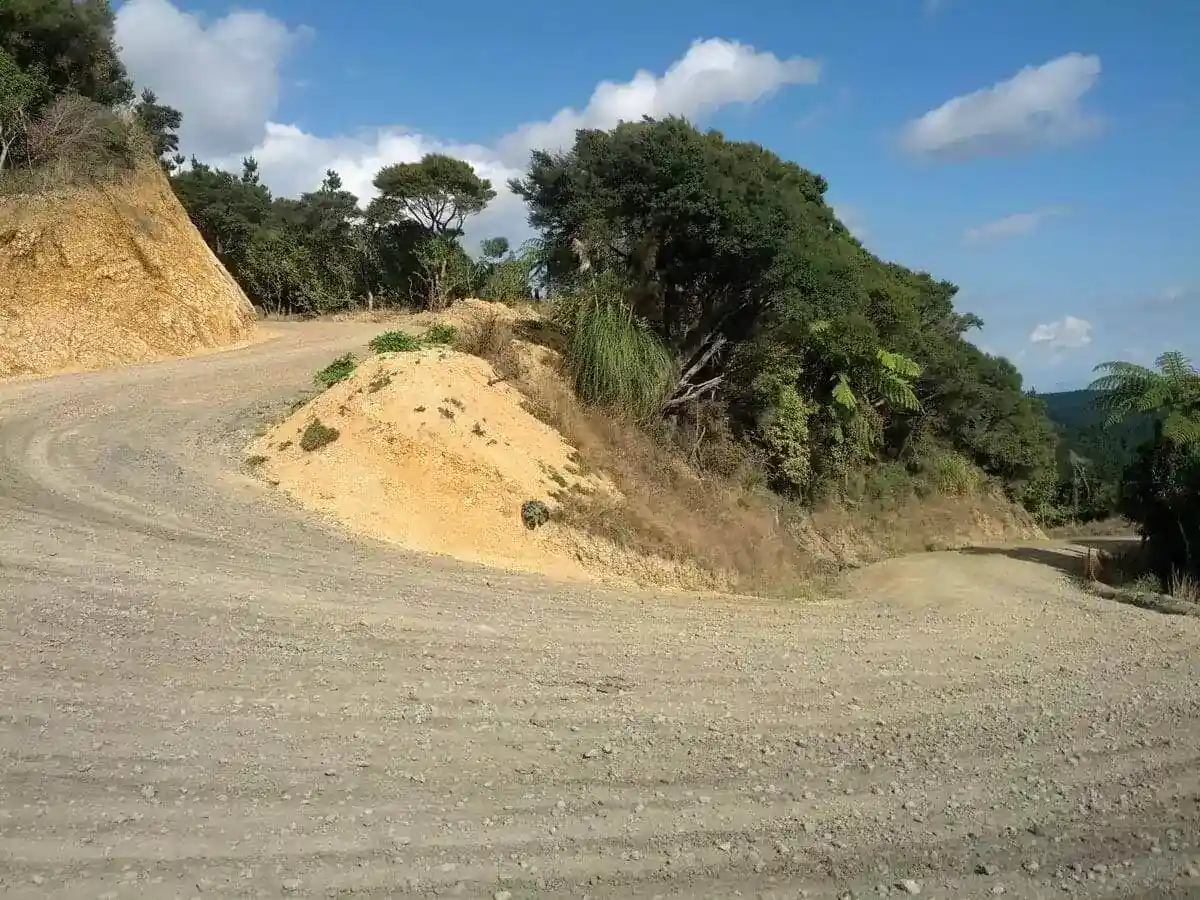
-
-
In mountainous terrain, visibility is limited at night. It can be extremely difficult to see oncoming traffic. Therefore, it is advised to avoid driving in such location at night if you are not accustomed to such situations.
-
You should check the functioning of your brake and handbrake every 50km.
-
Always drive in a low gear while driving uphill/downhill. Keep your fog lights and headlights on. Dip the headlight when you see an oncoming vehicle.
-
Drive cautiously when small streams are flowing across the road.
-
At times, rock-fall areas (slip zones) are pre-warned, and you should be extra cautious during heavy rain. Honking in such zone is not advisable.
Figure: Road sign to caution for rock fall area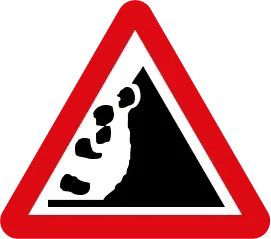
-
In forest area, whether forewarned or not, watch out for wild animals especially during the night.
-
In case your vehicle gets overheated due to driving for a long period in low gear, look for a suitable recess/ wider point, to park your vehicle. Switch off the engine, open the bonnet, turn on the blinkers and parking lights and wait for cooling.
-
Some drivers may not follow the rules, and hence, sacrifice and succumb your right of way to avoid accidents.
-
Before the start of your journey check the weather and terrain conditions in places along your route.
-
Check fuel indicator before you start to climb uphill as you may not find any filling stations until you reach the top of the hill.
-
In case your vehicle needs to be tagged in high altitude keep a torch, ropes, jump cables, etc. Keep a tested fire extinguisher handy. Always have first aid kit in the glove compartment, and an additional hazard triangle.